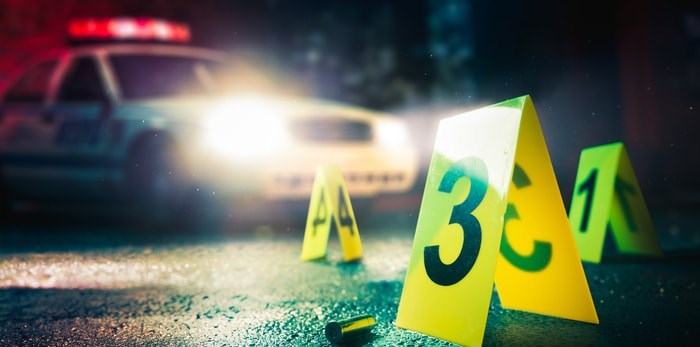Many secret death-investigation techniques the BC Coroners Service wants kept from release to the public can be found watching evening television.
Records released under provincial freedom of information law say collecting DNA, fingerprints and medical and dental records to identify a dead person are things the public should not know as they could help criminals get away with murder.
Criminal investigation experts, however, think the coroners service has gone too far.
 Crime scene/Shutterstock
Crime scene/Shutterstock
“Anyone could learn all those skills by searching the web, reading procedural books, going to the BCIT forensics program, watching CSI, watching trials or having an ounce of common sense,”said former RCMP sergeant and policing consultant Bruce Pitt-Payne.
The Coroners Service policy and procedures manual, released this week after a request dating back to August, was subjected to repeated government extensions and is substantially redacted.
Glacier Media obtained a 2015 draft copy of the manual and compared the two. The draft manual provides such details as how bodies are examined at a death scene, determining whether cause of death is natural, suicide, suspicious and, if violent, how it happened.
The list of techniques the government agency wants to keep secret is long in the document it has just released. They include:
• Needing coroners to attend death scenes;
• Examining the body;
• Speaking to family members;
• Attending hospitals where death occurred;
• Following occupational health and safety guidelines;
• Seizing items at a death scene or related records from other places;
• Marking seized items and recording the information;
• Photographing bodies;
• Toxicological testing in drug-related deaths;
• Conducting autopsies;
• Storing bodies in morgues; and
• Maintaining dignity of the deceased.
Many of those items are listed on the service’s public special investigationswebsite.
Also redacted is a list of abused medications including fentanyl, morphine and codeine – drugs frequently in the news as the drug overdose crisis continues.
Mention of an identification and disaster response unit is removed yet has been mentioned by coroners in past media articles.
“The Coroners Service didn’t come up with anything themselves,” Pitt-Payne said. “It’s all open source material.”
Pitt-Payne said some techniques are referenced in coroners’ verdicts while others discussed in criminal trials.
“None of the info they mention is ever held back,” Pitt-Payne said. “It must make them feel important to have secret information.”
Both chief coroner Lisa Lapointe and B.C.’s information and privacy commissioner have expressed concerns that public availability of the manual could allow criminals to manipulate crime scenes.
Coroners Service spokesman Andy Watson reiterated that Jan. 29: “Sharing specific direction given to coroners on investigative practices and techniques could harm the integrity of investigations.”
The service has long argued if a person planning to kill someone knew techniques for determining cause of death, their actions in committing a crime could influence a coroner’s judgment as to whether death was natural or accidental as opposed to a homicide, the provincial privacy commissioner has ruled.
A second freedom of information request about the handling of the August request yielded documents showing the service and the commissioner fear knowledge of techniques could help criminals manipulate death scenes.
A 2011 application for the manual argued before the commissioner that B.C.’s investigative techniques could be found on television, in books, forensic manuals or through forensic anthropology, chemistry or criminology courses.
The service disputed that, saying the argument applied to techniques used by others. Releasing the manual, it said, would confirm which techniques B.C.’s service does and does not use and “could lead to the termination of a criminal investigation without arrest in a case where a crime was committed,” an argument accepted by the commissioner.
Mike Larsen, criminologist and president of B.C.’s Freedom of Information and Privacy Association, agreed with Pitt-Payne, calling the redactions “unreasonable.”
“All of this kind of stuff is available online for academics from the novice to the advanced,” Larsen said. “If the coroners service wasn’t doing these things, we’d find them in dereliction of duty.
He said the Supreme Court of Canada has ruled withholding such information should be done in cases of probable, not possible harm. And, he said, there have been past attempts to retain the names of forensic software, attempts the commissioner has denied.
Larsen said the coroners service actions are reflective of a growing creep by Canadian organizations to try and keep routine information from the public as they maintain their own appearances. Government transparency decreases as a result, he said.
The service is responsible for investigating all sudden and unexpected, unexplained or unattended deaths. Through an investigation, a coroner classifies a death as natural, accidental, suicide, homicide or undetermined. Police and prosecutors can rely on coroners’ evidence for court proceedings.
The Ministry of Public Safety and Solicitor General, which oversee the Coroners Service, declined to comment.


